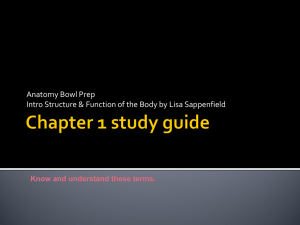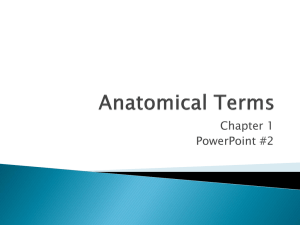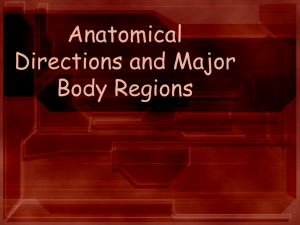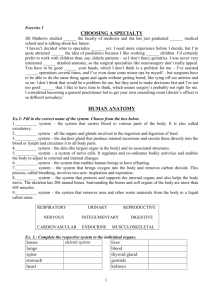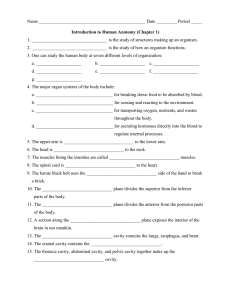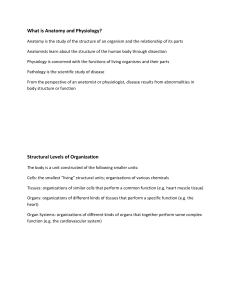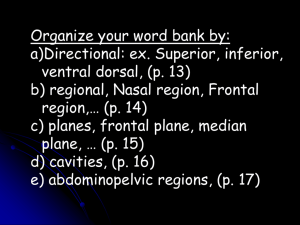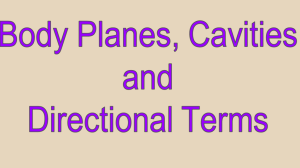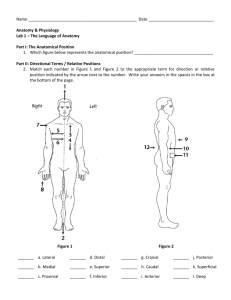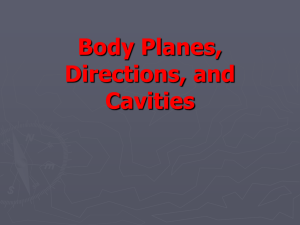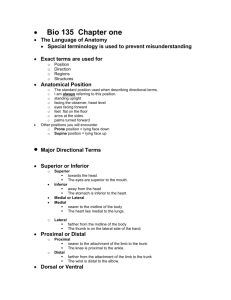Chapter 1 study guide
advertisement
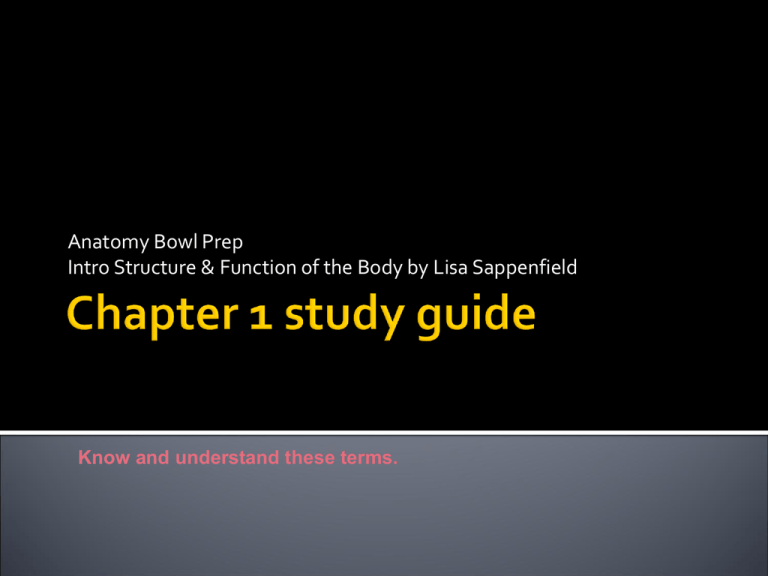
Anatomy Bowl Prep Intro Structure & Function of the Body by Lisa Sappenfield Know and understand these terms. Atoms The smallest particle of a pure substance that still has the chemical properties of that substance; composed of protons, neutrons, and electrons Molecules Particle of mater composed of one of more smaller units called atoms Cell The basic biological ans structural unit of the body consisting of a nucleus surrounded by cytoplasm and enclosed by a membrane Tissue A group of similar cells that perform a common function Organ Group of special tissues that performs a special function Systems A group of organs arranged so that the group can perform a more complex function than any one organ can perform alone Body Unified and complex assembly of structurally and functionally interactive components Supine & Prone Supine means that the body is facing upward And prone means that the body is facing downward Superior & Inferior Superior means towards the head Inferior means below or toward the feet Anterior & Posterior Anterior means front or in front of Posterior means back or in the back of Ex) Your shoulder is proximal to your elbow. Your skin is superficial to your bones. Medial & Lateral Medial means toward the midline of the body Lateral means towards the side of the body Proximal & Distal Proximal means toward or near the trunk of the body Distal means away from the or farthest from the trunk of point of origin of a body part Superficial & Deep Superficial means nearer to the surface Deep means farther away from the surface Sagittal plane Lengthwise plane that divides a structure into right and left sections Midsagittal plane Sagittal plane that divides the body into two equal halves Frontal plane Lengthwise plane that divides a structure into an anterior and posterior section Transverse plane Horizontal plane that divides a structure into upper and lower sections Ventral cavity Thoracic ▪ Mediastinum ▪ midportion of thoracic cavity; heart, trachea located here ▪ Pleural cavities ▪ right and left lungs located here Abdominopelvic cavity ▪ Abdominal cavity contains stomach, intestines, liver, gallbladder, and lowest part of intestine ▪ Pelvic cavity contains reproductive organs, urinary bladder, pancreas, and spleen Dorsal cavity Cranial cavity contains brain Spinal cavity contains spinal cord Homeostasis Relative consistency of internal environment Survival depends on homeostasis Feedback Loops Positive-stimulatory ▪ Example: Increasingly rapid sticking together of blood cells called platelets to form a plug that brings formation of a blood clot. (The process increases rapidly until the positive feedback loop is stopped by formation of a clot) Negative-oppose or negate a change in the controlled condition ▪ Example: excretion of larger than usual volumes of urine when the volume of fluid in the body is greater than the normal, ideal amount.
